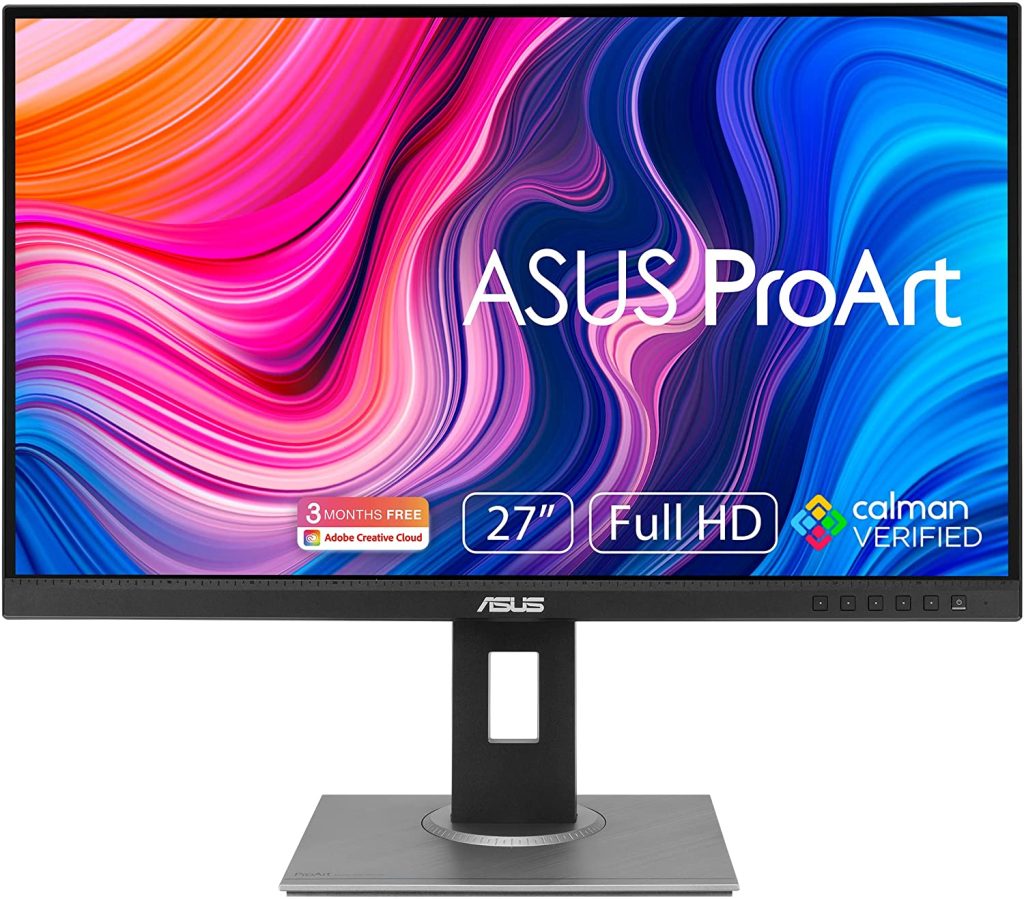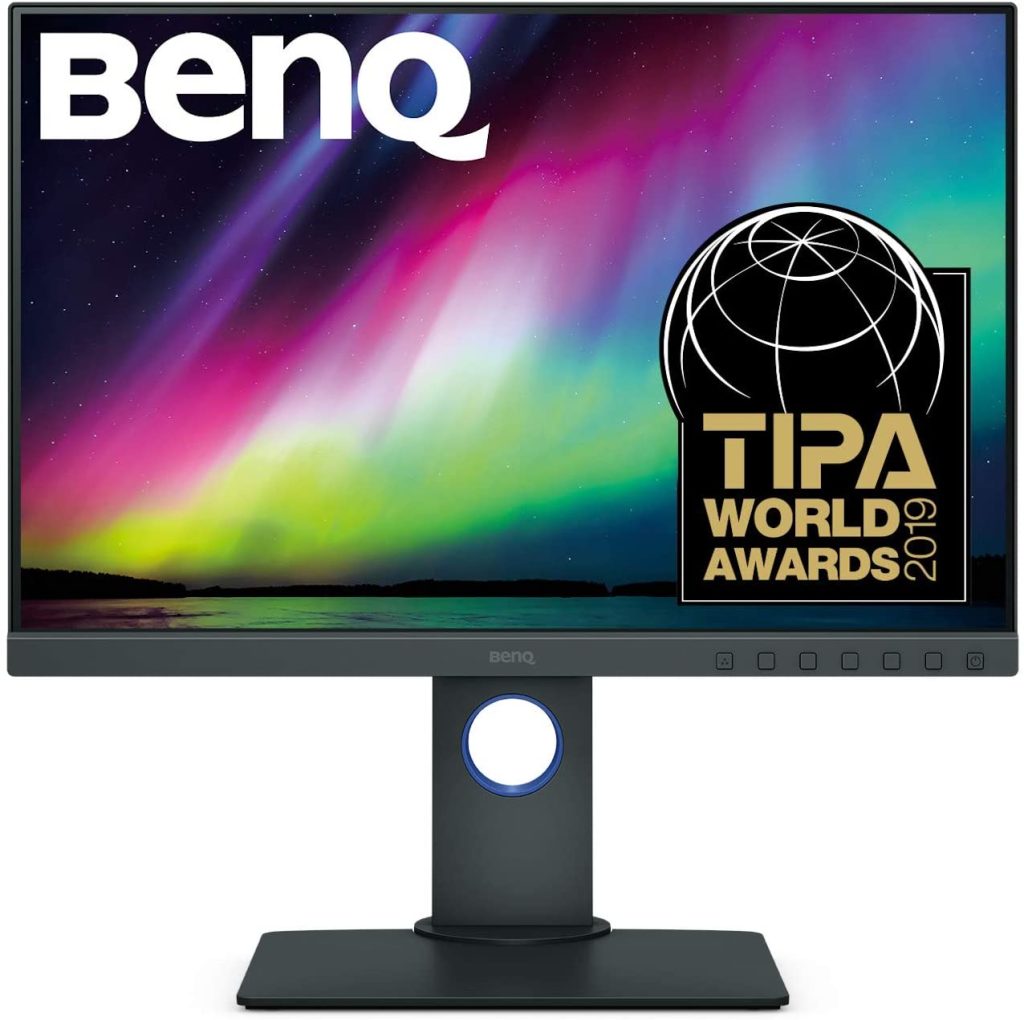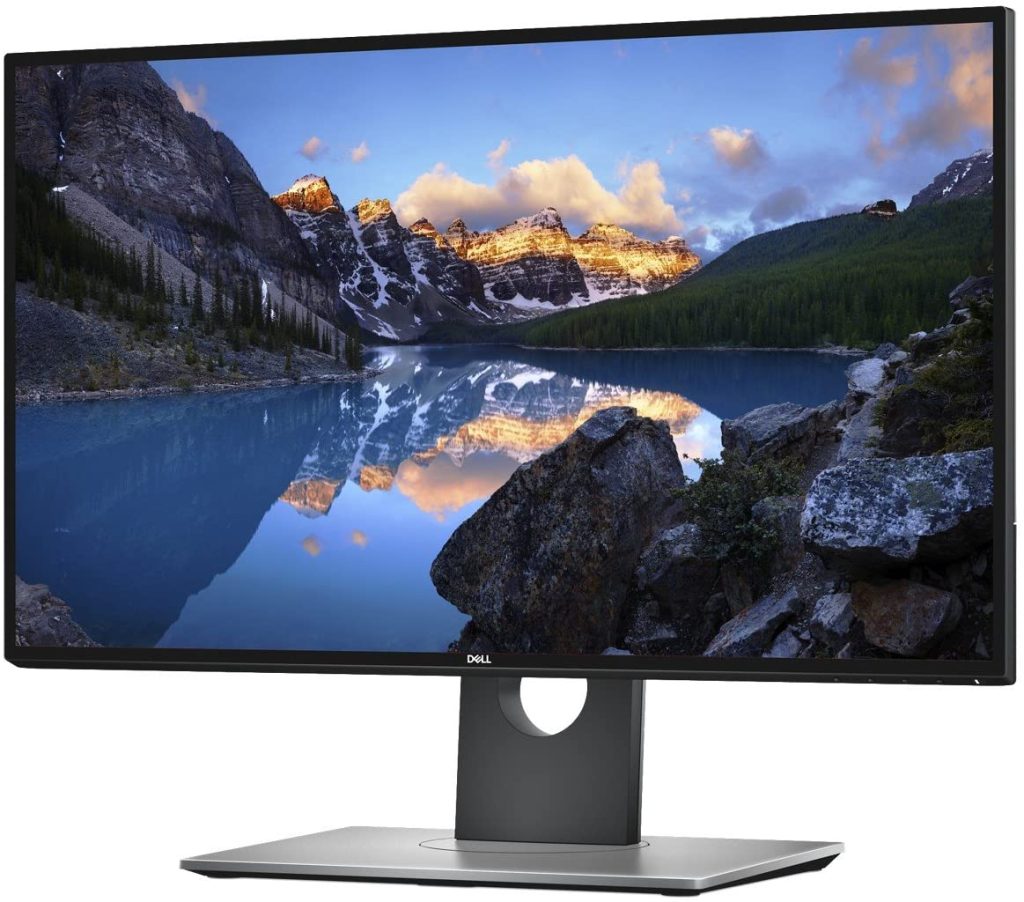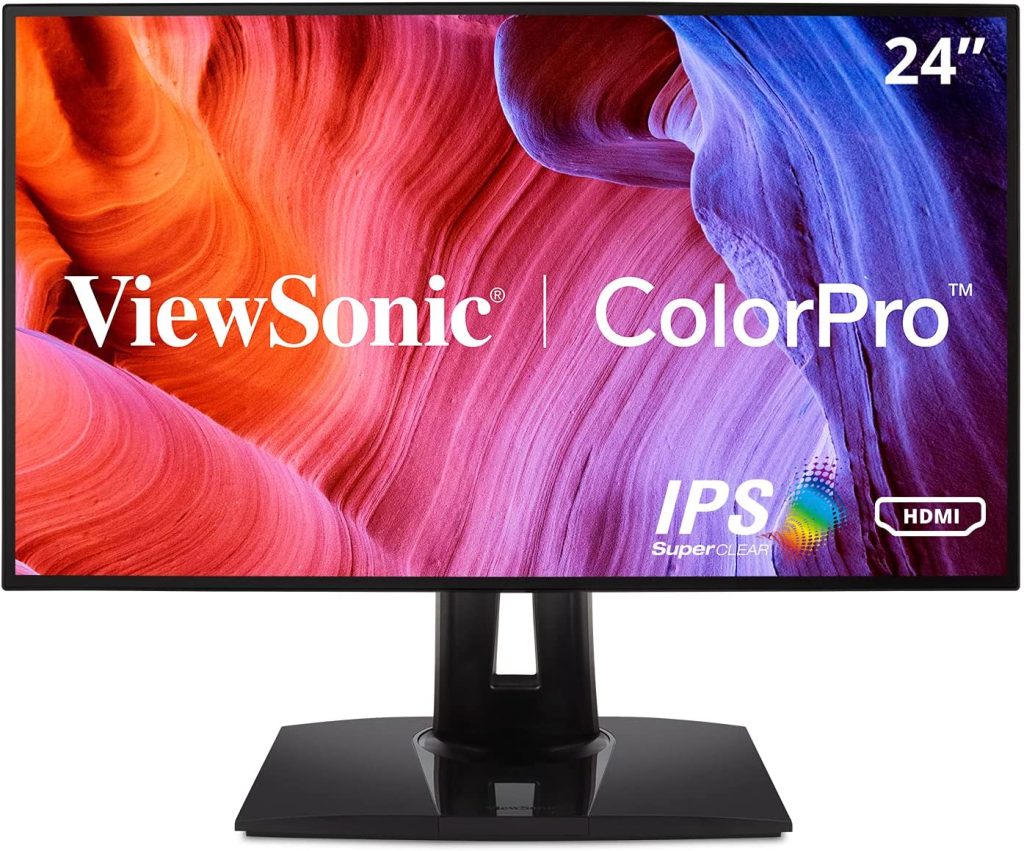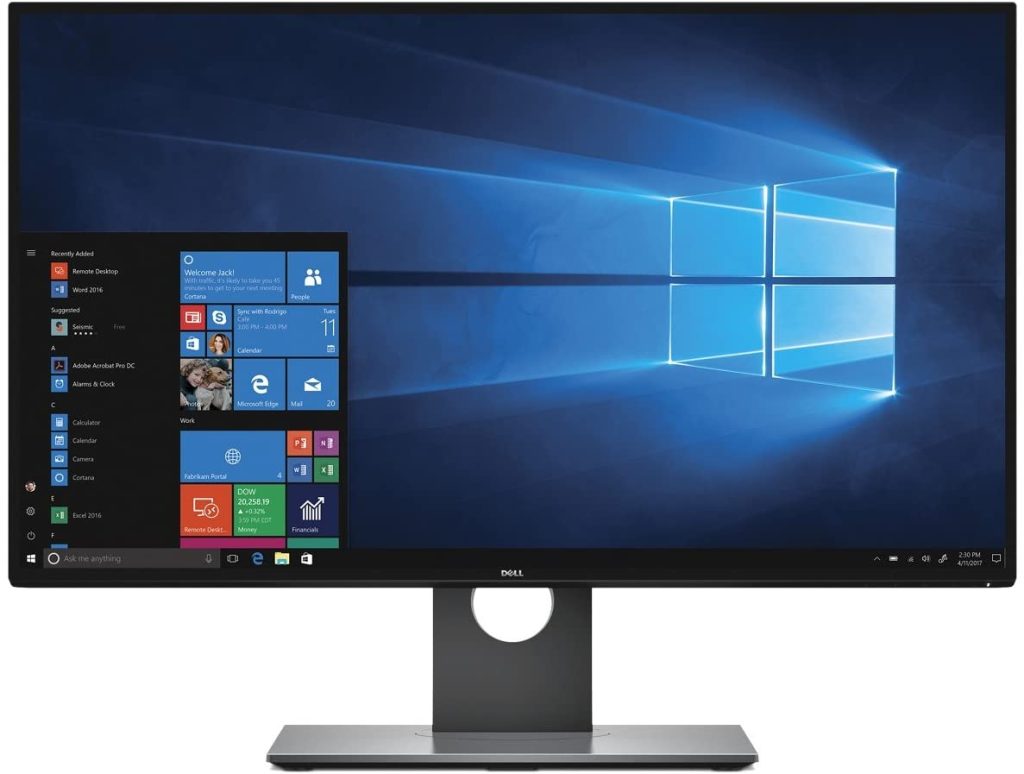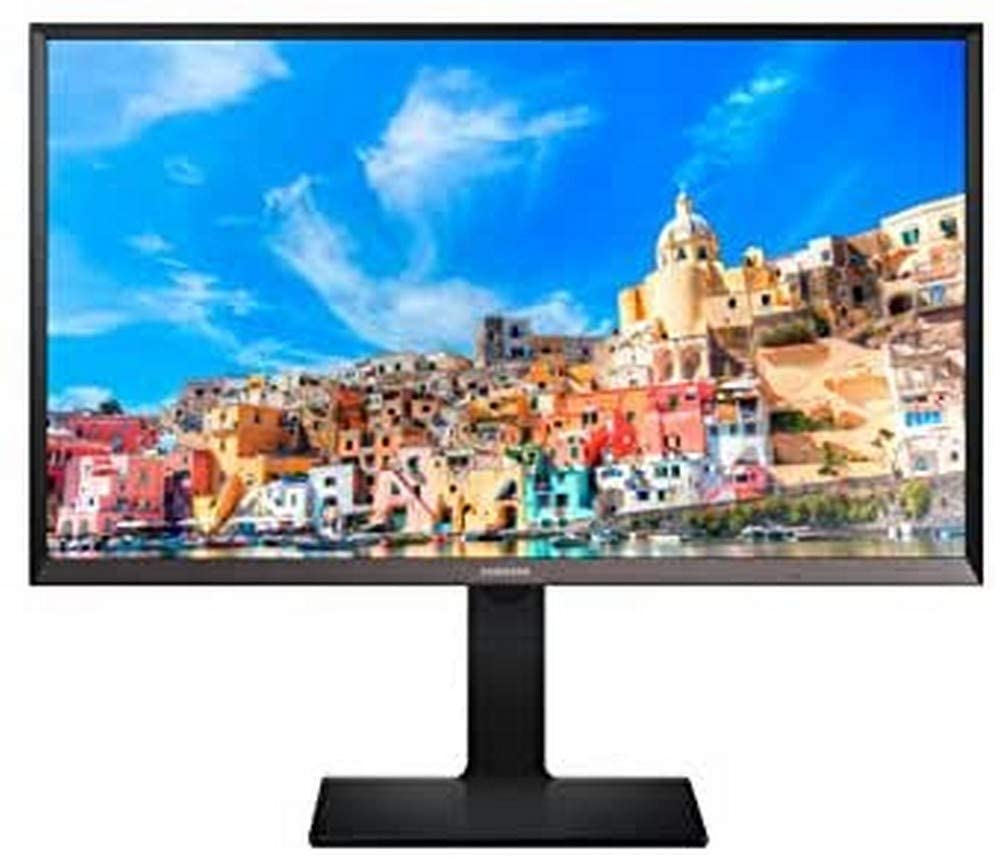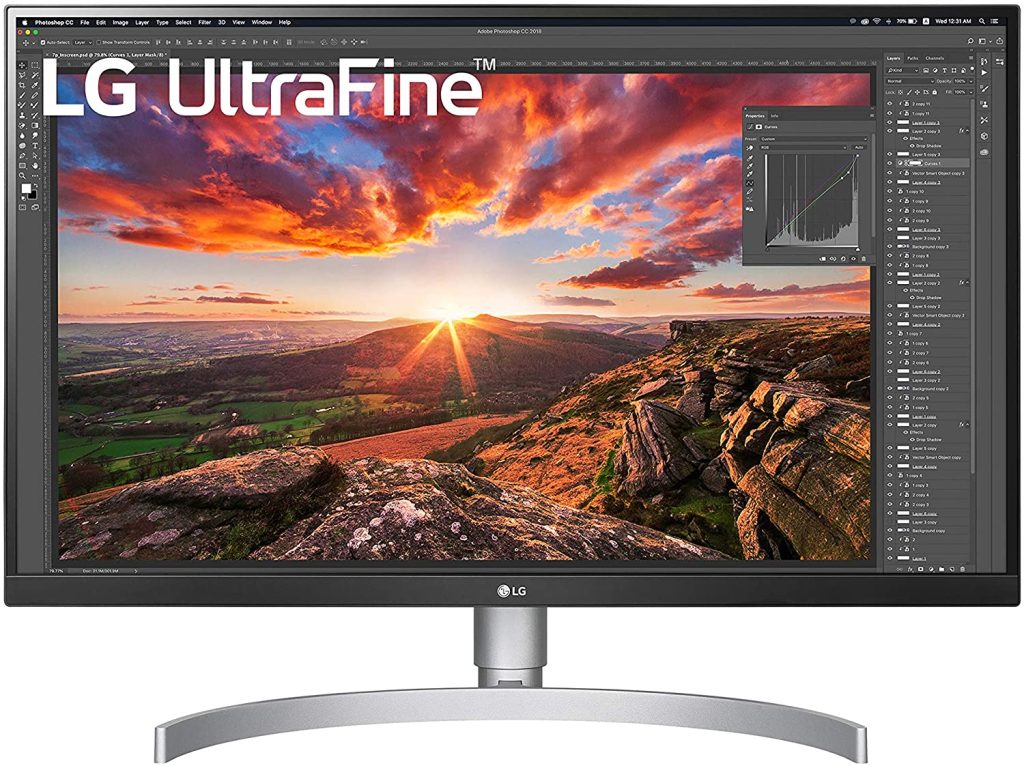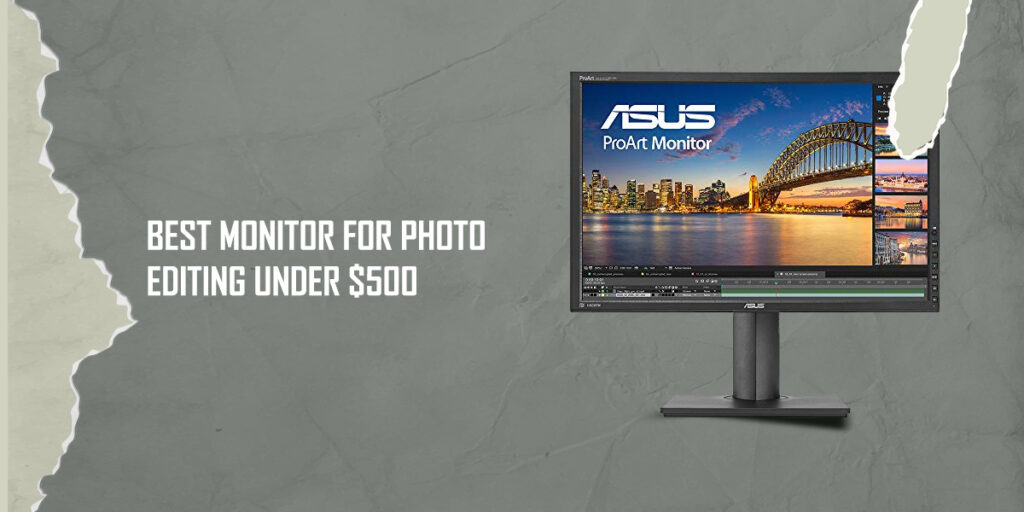
Looking for the Best Monitor for Photo Editing Under 500? This guide will serve you best regarding the topic mentioned. So keep reading to know more.
When it comes to photo editing, there are certain tasks that you need a high-quality monitor for. The most important part of the computer setup is the display. You can have all the latest hardware and software but if your screen isn’t up to snuff then you’re not getting the best experience possible. We’ve reviewed monitors priced under $500, intending to find the one that offers top performance at an affordable price point.
There are many options available on today’s market but we recommend this LG monitor as our favorite option because it has everything you could want in a display for photo editing, including fantastic color quality and contrast ratios, WQHD resolution (2560×1440), IPS panel technology and USB 3.0 support, which is great for use with modern laptops and graphics cards that lack display ports.
There are several other features that we like about this monitor as well, but that three alone cement it as a fantastic option for photo editing on a budget. For this article, we will focus mainly on PC monitors – though you can use any monitor for photo editing, see our article on how to choose the best one for your needs.
There are many considerations when looking for a display, but there is one in particular that differentiates PC monitors from other displays like HDTVs, and that difference is resolution. HDTVs usually offer 1080p (1920×1080) or 4K (3840×2160) resolution while monitors are generally 2560×1440, 3200×1800 or higher.
When you’re shopping for a new monitor, it’s also worth looking at the refresh rate of the display. 60 Hz is usually fine for regular use – but if you want buttery smooth motion or a more immersive experience, you’ll probably want to look for a refresh rate above 60 Hz.
Contents
Top 7 Best Monitor for Photo Editing Under 500
[amazon table=”388″]
1. ASUS ProArt Display PA278QV 27” WQHD (2560 x 1440) High-quality Monitor
This ASUS ProArt Display PA278QV monitor has a 27-inch WQHD display, 99% sRGB color accuracy, and 178° wide-viewing angle. It also features a frameless design that is ergonomic for any workstyle, all while being height adjustable with swivel and tilt functionality. ASUS’s ProArt line is designed for professional artists to make their work look as realistic as possible.
The PA278QV allows them to use the same equipment they are used to but now in much higher quality. The ASUS PA278QV is packaged in a sturdy cardboard box. On the front, we see an image of the monitor and its stand as well as some detailed information about its specifications such as screen size, resolution, input types, and color gamut coverage.
When we turn over this package to look at the backside (shown below), we can see an expanded image of the monitor in all its glory, followed by some marketing points highlighting why the PA278QV is a great product. The box’s content consists of one ProArt PA278QV monitor, one DisplayPort cable (the only input the monitor has), and one power cord (not shown).
There is also a quick setup guide that offers users a list of steps to quickly get started using the monitor as well as some highlighted key information. There is no full user manual included with this product, but one can be found online on ASUS’s website. The ProArt PA278QV has a lot going for it in terms of style and design. The glossy bezel around the display is very modern and clean-looking.
In addition, ASUS offers a customization kit so users can change the color of their stand to one of many different colors available on the market. The base weighs about ten pounds and has metal construction for sturdiness during bumps from daily use. The PA278QV is very sleek looking with its frameless design. It looks similar to other ASUS models of this same design but has an entirely matte finish instead of being glossy around the edges as well.
The stand offers height adjustment, swivel, and tilt abilities to help position the display for maximum comfort. The rear of the PA278QV is covered by a protective black plastic layer that helps keep dust out of the internals. It also protects this monitor behind closed doors so it can be taken to work or school with its user.
Pros & Cons
Pros
- 27-inch screen size
- Outstanding resolution and color reproduction (WQHD 2560×1440)
- 99% sRGB coverage ensures rich, true colors for all your favorite photos and videos
Cons
- No VESA mount compatibility
2. BenQ SW240 Sleek PhotoVue 24 inch Color Accuracy IPS Monitor
The BenQ SW240 is a 24″ class LCD that features a 16:9 aspect ratio and 1920×1080 resolution. This monitor is perfect for any multimedia use, whether it’s gaming, watching movies, or editing photos. It has a 5ms response time and supports up to 16.7 million colors so you can enjoy the highest quality of viewing experience with this product from BenQ.
Specifications
Aspect ratio: 16:9 Size (in inches): 23.8 Panel Type: IPS Response time: 5ms Refresh Rate: 75Hz Contrast Ratio : 100,000,000:1 Brightness: 300cd/m2, Connectivity ports available on the monitor are as follows; D-Sub (VGA), Display Port 1.2, HDMI, and Mini Display Port 1.2. Other notable features include; pivoting stand for viewing comfort and colors around even.
The most demanding of viewing angles, Low Blue Light technology which protects your eyes from harmful blue light emissions such as those associated with lights used for games or other multimedia purposes, Flicker-free technology which reduces screen flickering for a more comfortable viewing experience, and last but not least, the EyeCare technology which helps reduce eye strain from extended use of this product.
The BenQ SW240 is a sleek monitor that fits into any living area or workspace without taking up too much space due to its ultra-slim bezel. To adjust the screen to your viewing preference, it can be tilted and pivoted which is a great feature that most monitors of this size don’t usually come with. The color quality of this monitor is great and it can show about 16.7 million colors so you don’t have to worry about any dullness or lack of sharpness in images, videos, or even games.
The next generation of video and display products is upon us and the BenQ SW240 has a nice design and great picture quality to fit right in with any multimedia needs you might have. The BenQ SW240 is great for any all-in-one suite of entertainment equipment. The colors pop and the design makes it look like a piece of art rather than your average 24″ monitor. Along with this, image quality looks almost perfect in every situation.
Pros & Cons
Pros
- Sleek Design
- Slightly curved screen for added viewing comfort.
- The screen can pivot and be tilted to adjust as desired.
Cons
- No built-in speakers, but there is a headphone jack if needed.
3. Dell UltraSharp LED-Lit Monitor 25″ Black (U2518D)
Dell’s new UltraSharp LED-Lit U2518D monitor offers a breathtaking viewing experience. With its 25″ screen, this monitor is perfect for watching 4K movies, managing digital photo collections, or playing games. Enjoy the premium quality of their new display with HDR at remarkably high resolutions and stunning color accuracy with 100% sRGB coverage.
With the UltraSharp LED-Lit U2518D, Dell has implemented an 8-bit color depth and shows 1.07 billion colors simultaneously – something we know from professional image editing monitors like the Eizo ColorEdge CG318 HDR. If you use graphics software or 4K video editing programs, this will be a great advantage for you.
The monitor is not only able to show 100% sRGB content but also offers stunning images that cover 98% of the DCI-P3 color space (for comparison: TVs usually offer around 80%). Dell achieves such high quality by using an IPS panel with a resolution of 3840 x 2160 pixels and a refresh rate of 60 Hz. Dell’s U2518D uses a USB Type-C interface with DisplayPort 1.2, Mini DP 1.2, and dual HDMI 2.0 connectors to ensure compatibility with the latest graphics cards
The monitor also offers HDR10 support which is notable for games or video editing programs that can provide this performance thanks to its 8-bit color depth. The price of Dell’s UltraSharp LED-Lit U2518D isn’t available yet but will probably be in the region of roughly 627 US Dollars.
The Dell UltraSharp U2518D Monitor is perfect for anyone looking for a display with an impressive visual performance at their fingertips. Whether you are working on home projects such as graphic design or editing photos and video, this monitor will give you the quality and immersive experience that you deserve.
It also has HDR support, so you can view your favorite movies in all their glory! Whether you’re watching videos or playing games, the Dell UltraSharp LED-lit U2518D Monitor will have everything looking beautiful. It’s great to see Dell focusing on high-end displays that are useful for professional purposes. The design looks very nice as well, so if you’re looking for a UHD monitor with all the bells and whistles.
Pros & Cons
Pros
- Impressive visual performance.
- Design That Looks Great.
- HDR10 Support.
Cons
- Backlights are visible in a dark room / dark background.
4. ViewSonic VP2458 Monitor 24 Inch 60hz IPS 1080p Monitor
The ViewSonic’s superior VP2458 monitor offers incredible visual performance and color accuracy, so you never have to worry about missing out on the action ever again. With ultra-fast response time and stunning screen detail, this monitor is perfect for gamers, graphic artists, photographers, and more.
The ViewSonic VP2458 monitor is the ideal 24 inch, 1080p Full HD display for anyone looking to take their PC games or movies to the next level. SuperClear MVA panel technology delivers vibrant images with excellent contrast, and our flicker-free technology eliminates annoying screen flickers for a comfortable viewing experience.
The VP2458 is also VESA wall mount compliant, giving you the freedom to hang your monitor on a wall or stand it up using an optional stand or mount. This is an excellent monitor for anyone looking to improve their viewing experience through deep black levels, accurate color reproduction, and ultra-fast response time across all resolutions.
The ultra-thin bezel makes this monitor perfect for multi-display viewing, and the flush-mounted buttons are easily accessible. If you’re looking to take your PC games or movies to the next level, look no further than our VP2458 monitor. ViewSonic’s widescreen VP2468 monitor is a premier Full HD display that offers breathtaking images and solid performance.
With outstanding color accuracy, a wide array of features, and a striking modern chassis design, the VP2468 is a superior choice for home entertainment or professional use. The ViewSonic Full HD monitor offers stunning screen detail and vibrant color, courtesy of 100 percent sRGB and the widest viewing angles are available.
Our ultra-fast response time reduces lag and motion blur, and a four-millisecond gray to gray response time delivers smooth, crisp action sequences free from undesirable ghosting. Our exclusive ClearMotiv II image processing technology delivers outstanding video through fast input to output times without motion blur or distortion for exceptional gaming experiences.
ViewSonic’s 24-inch VP2468 monitor is the perfect choice for anyone looking to take their viewing experience up a notch. The stunning Full HD resolution delivers outstanding screen detail, and the incredible 100 percent sRGB color accuracy ensures that colors are displayed as they were meant to be—accurately.
The ultra-wide viewing angle prevents distortion at wide viewing angles, letting you take in the full breadth of color. On top of that, our exclusive ClearMotiv II image processing delivers superior video through fast input to output times without motion blur or distortion for exceptional gaming experiences.
Pros & Cons
Pros
- Premium sculpting with the black metallic color scheme
- Tilt/height adjustment and VESA mount compatible
- Full HD 1080p resolution and wide viewing angles
- GamePlus crosshair and timer modes
Cons
- Expensive Slim bezel design
- No speakers
- Flimsy base
5. Dell U2717D 27″ UltraSharp InfinityEdge Slim Widescreen LED LCD Monitor
The Dell U2717D is a 27-inch display with an InfinityEdge curved screen and features like WQHD resolution, Adobe RGB wide color gamut, and IPS technology. The Dell UltraSharp U2717D is an excellent ultrawide monitor that can be used by almost anyone. The WQHD display makes it perfect for gaming, photo/video editing, and other multimedia tasks.
It has multiple connectivity options so users should have no problems hooking up their PCs, laptops, or game consoles to this monitor. The monitor is also great for work. The UltraSharp U2717D features an ergonomic stand with a 130mm height adjustment, 34° tilt, and 90° swivel so it can be adjusted to the most comfortable viewing position.
It allows users to connect their laptops or PCs through HDMI 2.0, DisplayPort 1.2, mini DisplayPort, and a USB hub with four USB 3.0 ports. With all these connectivity options, this monitor can replace your laptop’s display as well. The Dell UltraSharp U2717D is a great monitor for almost everyone – gamers, designers, photographers, editors, or just simply anyone who wants an excellent viewing experience with accurate colors at 27-inches.
Pros & Cons
Pros
- WQHD resolution (2560 x 1440) – perfect for gaming, photo/video editing, and other multimedia tasks (4K is nice but it’s not as sharp as a QHD monitor)
- Excellent color reproduction
- Good grayscale and gamma tracking
- Ergonomic stand with built-in cable management
Cons
- Expensive
6. Samsung SD850 32″ WQHD (2560×1440) LED-Lit Monitor
There are many monitors on the market today, but Samsung SD850 32″ WQHD LED-Lit Monitor is a great choice for anyone looking to upgrade or replace their old monitor. This high-quality device has wide viewing angles which means you can view it from multiple positions without distortion. The design includes an anti-glare display that will help reduce eye strain and increase your productivity.
It also features broad connectivity options including HDMI, DisplayPort, DVI, VGA, and component input connections so you have plenty of video outputs to choose from. One of the most attractive features of this monitor is its ultra-wide WQHD resolution which provides 34% more screen space than a full HD display.
It also comes with multimedia capabilities that include built-in speakers and Samsung’s Magic Bright technology that gives you an optimized picture in different environments. The SD850 has a sleek and stylish design that includes two slim bars on either side of the panel with a brushed-metal finish along the bottom.
Both of these bars come with touch-sensitive control panels that include Power, Menu, and Select buttons so you can access and adjust your settings quickly and easily without using a keyboard or mouse. The stand features Samsung’s advanced Gravity SensorTM technology that detects when the monitor is moved and switches your display off. This prevents wasting energy, saving you money on your electricity bill.
It also prevents potential damage to the screen caused by accidental tugging or pulling of cables. The SD850 has an ultra-wide 32″ screen with an aspect ratio of 16:9. It has a high resolution of 2560 x 1440 pixels, which provides 34% more screen space than a full HD monitor. The anti-glare display prevents reflections and distractions so you can get on with your important tasks without worrying about unwanted distractions.
The display also has 178° viewing angles, which means you can view it from multiple positions without distortion. Samsung Magic Bright technology automatically adjusts the brightness of your screen depending on how bright or dark your surroundings are. The monitor also includes an Eye Saver Mode that gives older eyes a more comfortable viewing experience by diminishing blue light emissions to prevent eye strain.
It also has Flicker-Free technology to reduce eye fatigue. The monitor has HDMI (High Definition Multimedia Interface), DisplayPort, DVI, VGA, and component input connections so you can connect your PC or laptop easily. You can also listen to your favorite music or watch movies on the monitor through its built-in 16W speakers that provide great sound quality.
Pros & Cons
Pros
- Ultra-wide QHD resolution enhances the visual experience and provides 34% more screen space than full HD.
- 178° viewing angles mean you can view this monitor from multiple positions without distortion.
Cons
- This monitor consumes more power than a full HD one.
7. LG 27UN850-W Ultrafine UHD, VESA DisplayHDR High-quality Monitor
The LG 27UN850-W Ultrafine UHD Monitor is the perfect monitor for those who want a large, high-resolution display without paying too much. With an elegant and sleek design, this monitor will fit in nicely with any office or home setup. The new IPS display offers vibrant colors and wide viewing angles that allow you to see all of your content from many different positions.
This 27 inches LED-backlit screen has a 4K resolution which means it provides four times as many pixels as a full HD 1080p display. This allows you to view more detail on the screen at once without scrolling through pages of information like you would have to do on a lower resolution screen. The UltraFine UHD also features AMD FreeSync technology which reduces screen tearing and stuttering for an even smoother gaming experience.
For those of you looking to use this monitor with your Mac, the 27UN850-W has a Thunderbolt 3 port that allows you to connect directly to your laptop without any kind of adapter or converter. This single cable connection provides 60W charging power to your computer and even charges your laptop if it’s able to charge from a USB port.
In addition, the Thunderbolt 3 technology provides up to two 4K displays or a single 5K display output which means this monitor would make an excellent companion for a MacBook Pro with a built-in 5K display.
The LG 27UN850-W Ultrafine UHD Monitor is an excellent choice for anyone looking to upgrade their monitor to a 4K high-resolution display without spending too much. With its elegant design and built-in Thunderbolt 3 port, this monitor provides all of the features you need in an affordable package.
Pros & Cons
Pros
- Beautiful 4K resolution provides lots of detail.
- Thunderbolt 3 makes for a single cable connection to your Mac laptop.
- IPS display provides vivid colors from all angles.
Cons
- No VESA mount compatibility means no wall mounting option.
Basic Requirements In The Best Monitor for Photo Editing Under 500
So, you want to buy a monitor for photo editing? That’s great! The right tool for the job is essential. But what do you need in a monitor that makes it good for photo editing? Read on and find out. Many things can affect your experience when using your computer such as the quality of the keyboard, mouse, screen resolution, etc.
However, one thing that people often forget about when considering their purchase is their monitor. When working with any software like Photoshop or Lightroom we recommend having at least two monitors to work more efficiently and effectively by viewing different windows simultaneously and not feeling overwhelmed by information overload (the dreaded “I’ve lost my train of thought” syndrome).
Choosing the best monitor for photo editing can be difficult. There are so many things to consider such as size, resolution, and color gamut. But at the end of the day, it all comes down to personal preference and what you need your monitor to do for you. We must take time to think about what we want our monitors for before we purchase because this will help us find the best one on the market.
If you’re looking for some tips and tricks then keep reading. We’ll walk through everything from choosing a size and resolution to color depth and calibration to ensure that when you go out there buying your new monitor; it’s exactly what you’ve been dreaming of.
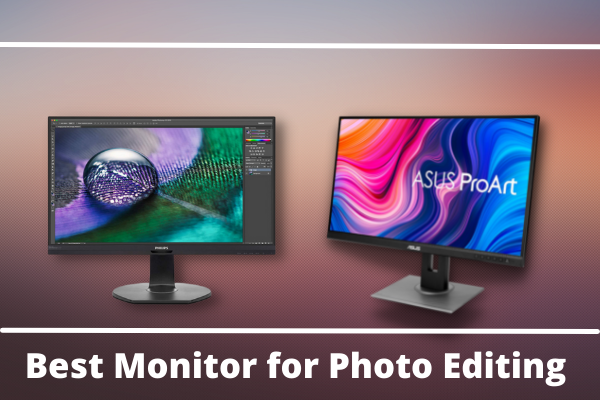
Things To Consider While Buying Best Monitor For Photo Editing Under 500
Screen Size
One of the most important things to consider when choosing a monitor for photo editing is the size. Do you want your monitor to be huge or maybe just big enough? More importantly, you have to think about resolution. If you’re buying a bigger monitor then it’s probably wise that you go with a higher resolution because more pixels will allow you to see all of the details in your photos.
However, if you go with a small monitor, then you’re going to need at least two (one for each monitor) and that can end up getting pricey. The popular choice among professionals is 24″-27″, but keep in mind that these numbers are dependent on the resolution. A higher resolution will require a larger monitor as it can handle the increased number of pixels (see below for more information).
Most people agree that 24″-27″ works well for most photo editing tasks, but ultimately, this comes down to personal preference and what you feel comfortable working with. We can tell you that we prefer a slightly larger monitor for photo editing, but we usually go with the 27″ iMac and it does the job.
We like to have enough space where we can make out all of the details in our photos as well as large enough that we don’t feel cramped when working on multiple images at once. We feel that a 27″ monitor provides the best experience for photo editing because it’s not too small to where we’re missing out on details and it’s also not too big that our window is filled with an abundance of information.
Colors and Color Gamut
When it comes to choosing a monitor, most people think that the more colors a monitor can display, the better. However, this isn’t always the case because higher color gamuts mean more expensive monitors which means you’ll have to fork up even more cash. For instance, if you’re going with a standard sRGB color space, you’ll only need a monitor that has a 72% color gamut.
However, if you’re going with Adobe RGB then you’re going to have to get something that is at least 90% or better. If money isn’t an issue then by all means go for the best of the best because this will ensure a wider color gamut which means you’re getting the most out of your monitor. Plus, if you ever plan on using a printer to print your images then you’ll need something that has a very wide color gamut because printers use CMYK(Cyan, Magenta, Yellow, and Key (black).
Calibration
After you’ve picked out a monitor that has an appropriate size and resolution, you’ll want to calibrate it to ensure that your colors are accurate. Calibrating your monitor is very important if you’re looking for accurate color representation because what you see on the screen should be similar to what’s seen when printed.
There are several calibration tools available such as the Spyder4 or i1 Display Pro, but if you’re on a tight budget you can also try to use your printer and scan/digital camera for calibration purposes. To get accurate color representation from your monitor, set it to 96% sRGB (Adobe RGB for pre-calibrated monitors) and then dial in the colors via your software.
For editing, Adobe RGB is recommended because it contains a larger color gamut compared to sRGB which means you should be able to print with more accurate colors. However, keep in mind that if you’re going to use your monitor for photo editing AND have it professionally calibrated then you’ll only need an LCD that has a 92%–100% Adobe RGB color gamut.
It is important to note that your monitor should be calibrated regularly for colors to remain accurate. Typically, calibration needs to be done every month or so depending on how often you use your computer and how accurately it represents the colors displayed on the screen.
For editing and printing purposes, I recommend getting a display with an Adobe RGB color gamut. If you’re going to use your monitor for general use then either a standard sRGB or Adobe RGB display will suffice.
Response Time
Monitor response time refers to how quickly the screen updates when you move your mouse pointer or make a change with Photoshop or Lightroom. We recommend getting a monitor that has a response time of 5ms or less, especially if you’re doing video editing because it will decrease lag and produce much better quality videos.
Vertical Alignment (VA)
For photo editing, it is important to have a monitor that has a vertical alignment. This is because VA will offer better contrast between colors which makes photos appear more stunning. A good example of a high-quality monitor with this feature would be the Asus PB278Q. It’s one of the most popular monitors for photographers and retails for around $400.
IPS Panel
If you have a little more money to spend, then we recommend getting an IPS monitor. They offer great color accuracy and a bigger viewing angle so your colors won’t fade when looking at the screen from different angles. A good example of this would be the Dell Ultrasharp U2711 which retails for about $570.
HDPI Monitors
For the best color accuracy and reproduction, we recommend getting a monitor that has an HDPI display. They have 99% Adobe RGB which means you will get more accurate colors when editing photos. A good example of this type of screen would be the NEC MultiSync PA271W-SV which retails for around $650.
Widescreen Monitors
If you’re more into video editing then you might prefer a monitor that has a widescreen. Widescreen monitors are great for watching movies and playing games on, but not so much for editing photos because they have a lower pixel count. They also tend to be a little more expensive.
Backlit Display
If you’re going to be editing photos in low light or at night, then it’s important to get a monitor that has a backlit display. Otherwise, the screen will be hard to see and make your work difficult to do. A good example of this kind of screen would be the Asus VK248H which retails for just $270.
Built-in Speakers
Lastly, you want to get a monitor that has built-in speakers because most monitors don’t come with them. If you’re editing photos without an external speaker system then it will be hard to hear soft sounds like the click of the mouse or drop of a card in Lightroom. We recommend getting a monitor that has at least 1w of power. A good example would be the Samsung S24B360 which retails for around $120.
How To Setup Your Monitor For Photography?
If you’re shooting for a client and they ask to see the images on your computer. They also request that you show them how the photo was taken because it’s important to them. You open up Lightroom, but when you look at your monitor, all of the photos are blurry! It’s not just because it’s an old monitor either- many people have this problem with their monitors or their settings are incorrect.
Step 1: Calibrate Your Monitor
This is the first step and it’s super easy. If you have a Mac, go to System Preferences > Displays > Color and make sure that your settings look like this:
If you’re on Windows, open up the Start menu, type in “calibrate”, and open up the color calibration program.
Step 2: The Right White Balance Settings For Photography
This one is a little more complicated, so please bear with me. The reason why your photos are turning out blurry is that your white balance settings are incorrect. White balance isn’t just about fixing the temperature of images and making things either too warm or too cool: it also refers to the color of light that we’re seeing.
For example, if you took a photo outside and it looked yellow, then your white balance settings were incorrect. There are several ways to fix this problem (including using an app such as Color Thief), but it’s easiest to do it on your monitor. I’m going to use a picture from the Free People catalog as an example:
Here’s a real quick and dirty way of fixing your white balance if you’re shooting for a specific brand or client: open up the color picker, click on a white area in the image, and make it gray. Now that we’ve fixed our white balance, we can move on to the next step.
3: The Right Brightness & Contrast Settings For Photography
Now that your white balance is corrected, the image should appear bright and crisp. However, if you open up your brightness and contrast settings in Lightroom or Photoshop and turn them up, your image will look like this:
See how crazy and unrealistic it looks? That’s because we need to adjust things so that the contrast is more realistic. To do this, just play around with the settings until you reach a happy medium.
Step 4: The Right Color Settings For Photography
This step is fairly simple: all you need to do is make sure that the photo on your monitor looks like what you want it to look like in real life. If you’re shooting for a client and they provided color swatches, try to mimic the colors as closely as possible so that when they see the image in real life, it looks exactly how they wanted. You can also do this with Alex Wang’s free color picker (Just click on the link in Alex’s tweet)
Step 5: The Right Gamut Settings For Photography
The last thing you need to worry about is your gamut settings. Gamut refers to a color space or a specific range of colors. For example, Adobe RGB was created for professional printing and it includes more blue tones than your standard sRGB profile does. If you set up your monitor correctly in the previous steps, then this step is easy: just make sure that you’re using the right gamut for what you’re trying to do.
Conclusion
When it comes to editing your photos, you don’t have to break the bank to get a quality experience. All of these monitors offer at least one or two features that make them worth considering for photo editing and can be found the best monitor for photo editing under 500. We hope our list has helped you find the perfect monitor for your needs and we encourage you to share this article with others who may also need help finding the right product.
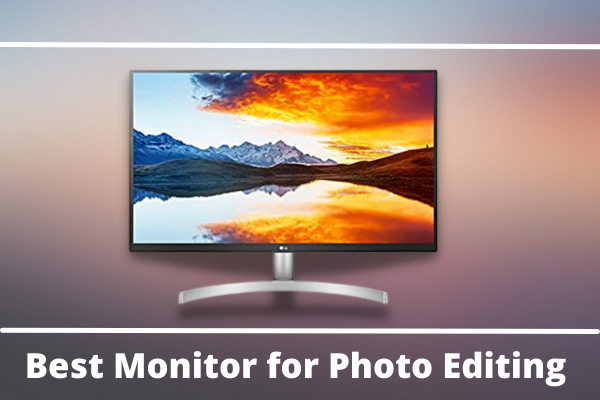
Let’s be honest, you can find great displays for less than $500, but the quality of the actual display just isn’t good enough for serious photo editing. If that is what you are looking for then you should expect to spend closer to $1,000 or more depending on your needs. We understand this is a lot of money for many people, but if you are serious about your photo editing then it’s worth it.
Not everyone can afford to spend $1,000+ on an item like this, which is why we have put together the list below. If you need great displays without breaking the bank then this is the list for you. All of these monitors are well under $500 and offer at least one or two features that make them worth considering for photo editing.
After reading this blog post, you should know which monitor will work best for your photo editing needs. We hope that we have helped make the decision a little easier and give you some great information to take into account when making your purchase. If there is anything else we can do for you please let us know.
- Write Smarter, Not Harder: Grammarly’s Next-Level Writing Support - July 15, 2024
- Is LOFT Worth It? A Detailed Review of Its Features and Benefits - May 6, 2024
- Weebly: The Ultimate Platform for Creating Stunning Websites - April 9, 2024
- bet365: the ultimate casino destination for indian players
- win big and have fun with bet365: india\'s best casino site
- bet365: the only casino site you need for indian gaming fun
- join the fun at bet365: india\'s most popular casino site
- discover the best casino site in india: bet365
- play the best casino games and claim huge bonuses at bet365
- get ready to win big at bet365: india\'s premier casino site
- bet365: the online casino site that offers the best rewards
- why bet365 is the best casino site for indian players who love to win
- looking for the best casino site in india? look no further than bet365
- bet365: the casino site that offers the best gaming variety for indian players
- experience the thrill of casino gaming with bet365
- get your casino gaming fix at bet365, india\'s leading site
- join the fun and win big with bet365: india\'s top casino site
- discover the best casino site in india for big jackpots: bet365
- bet365: the casino site that offers the best experience for indian players
- play your favorite casino games at bet365, india\'s most trusted site
- why bet365 is the only casino site you need for indian gaming fun
- bet365: the premier casino site for indian players who love to win
- get in on the action at bet365, india\'s best online casino
